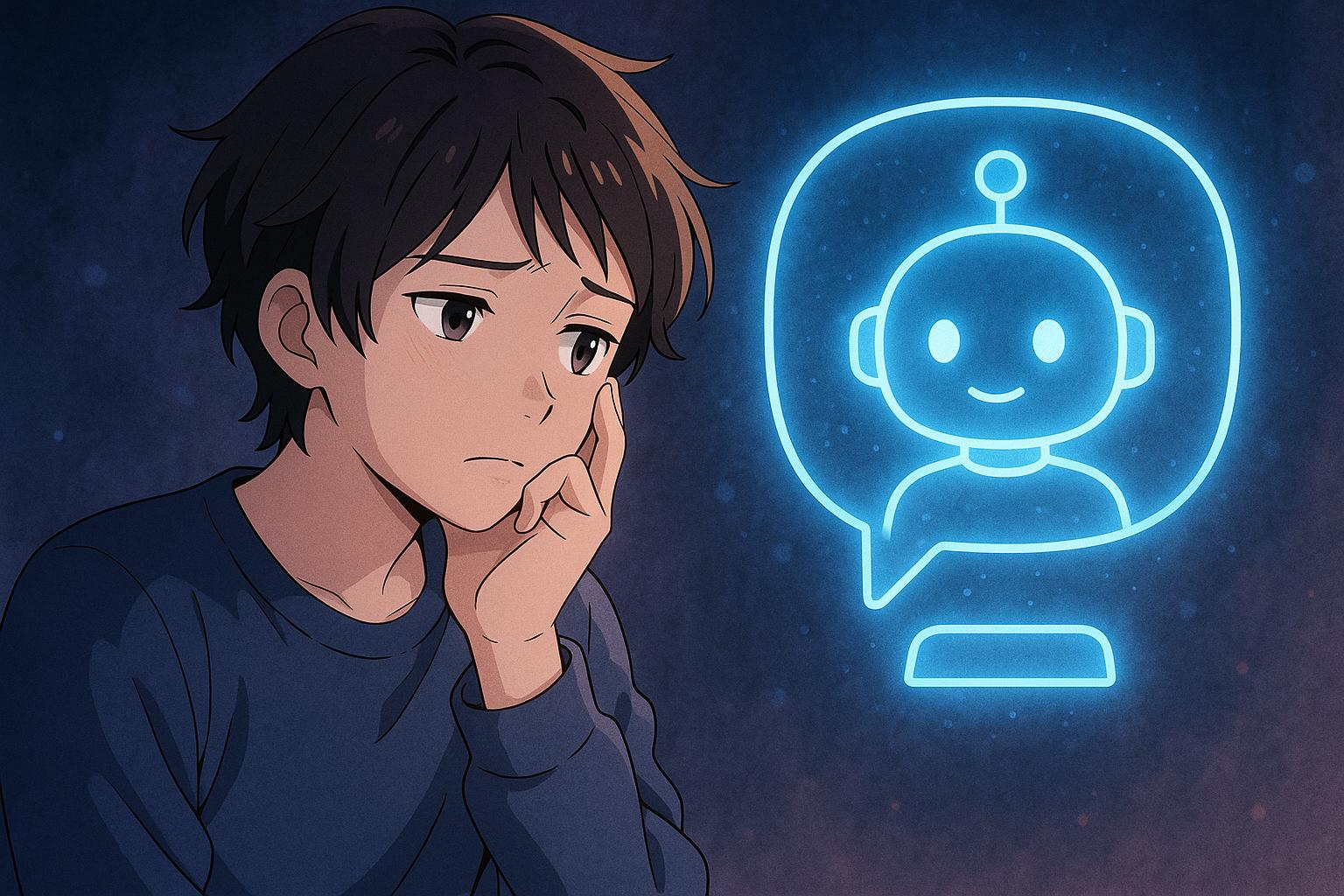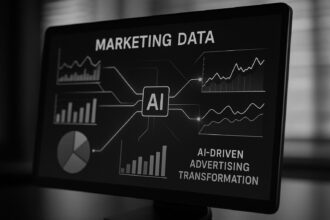With millions turning to AI chatbots such as ChatGPT for mental health support amid NHS wait times and therapy costs, professionals caution these tools lack the empathy, clinical insight, and safeguards necessary to address complex psychological needs safely.
AI chatbots are increasingly finding their place in the mental health landscape, with platforms like ChatGPT emerging as alternatives for individuals in need of support. However, this trend raises significant concerns among mental health professionals regarding the adequacy and safety of such tools in addressing complex mental health needs.
In March alone, a staggering 16.7 million TikTok posts revealed the growing interest in using ChatGPT and similar AI applications as a means of therapy. Users have shared positive experiences, with one TikTok user asserting that ChatGPT has significantly alleviated her anxiety related to dating and health by providing immediate emotional relief. Others, like a user employed by a startup without health insurance, describe the chatbot as a convenient, cost-free therapy alternative, offering advice and suggestions that mimic the conversations one might have with a friend.
While these anecdotes reflect a burgeoning reliance on AI for mental health support, a study conducted by Tebra illuminated a troubling statistic: one in four Americans would prefer to consult an AI chatbot rather than seeking traditional therapy. In the UK, the situation mirrors this trend, with long wait times for National Health Service referrals and prohibitive costs for private therapy prompting many young adults to explore digital solutions. More than 16,500 individuals were found to be awaiting access to mental health services for over 18 months, highlighting systemic issues within healthcare that fuel this shift towards AI tools.
Nevertheless, mental health experts caution against placing too much faith in these digital confidants. Dr. Kojo Sarfo, a social media personality and mental health authority, warned that while AI tools can offer therapeutic-like support, they lack the nuanced understanding and empathy that trained professionals provide. Sarfo characterised platforms like ChatGPT as entities that synthesise information from available sources, yet fall short in comprehensively addressing the complexities involved in mental health care. “I worry specifically about people who may need psychotropic medications,” he stated, emphasizing the peril of substituting AI interactions for genuine therapeutic engagements.
The potential risks extend beyond mere expectations; they include the dangers of misdiagnosis and inappropriate advice. Experts like Dr. Christine Yu Moutier, Chief Medical Officer at the American Foundation for Suicide Prevention, have voiced concerns about the absence of safeguards in AI platforms to address suicide risk. “The problem with these AI chatbots is that they were not designed with expertise on suicide risk and prevention baked into the algorithms,” she noted. Moreover, the inability of chatbots to fully comprehend the subtleties of human language and emotion can lead to harmful oversights for users in crisis.
Issues related to biases within AI algorithms also exacerbate the dangers, as interactions might inadvertently mirror societal prejudices. Genetically biased data can lead to unhelpful or even harmful responses, creating systemic inequities in the mental health support provided to disenfranchised populations. This highlights the critical necessity for rigorous data protection measures and ongoing clinical oversight to ensure that AI technologies do not undermine mental health care.
While AI chatbots can provide a degree of support, particularly in helping users articulate their symptoms or navigate initial concerns, they cannot replace the nuanced care and support that trained therapists offer. The importance of human empathy, understanding, and clinical expertise cannot be overstated. As the digital landscape continues to evolve, it remains essential that mental health professionals and technologists collaborate closely to establish standards that safeguard both individual health and the broader integrity of mental health support systems.
As AI tools gain traction, a balanced approach appears paramount—one that harnesses the innovations of technology without compromising the essential elements of human-led care.
Reference Map:
- Paragraph 1 – [1], [2]
- Paragraph 2 – [1], [3], [4]
- Paragraph 3 – [1], [5], [6]
- Paragraph 4 – [1], [2], [3]
- Paragraph 5 – [4], [5], [6]
Source: Noah Wire Services
- https://www.fox5atlanta.com/news/therapy-chat-gpt-ai-mental-health-expert-concerns – Please view link – unable to able to access data
- https://www.psychologytoday.com/us/blog/the-psyche-pulse/202407/ai-chatbots-for-mental-health-opportunities-and-limitations – This article discusses the benefits and drawbacks of AI chatbots in mental health care. It highlights that while AI chatbots offer 24/7 access and a private space for individuals to discuss their mental health, they cannot fully understand and empathize with human emotions. The article also raises concerns about privacy and data security, emphasizing the importance of robust data protection measures in digital mental health tools to safeguard user privacy.
- https://theconversation.com/your-ai-therapist-is-not-your-therapist-the-dangers-of-relying-on-ai-mental-health-chatbots-225411 – This piece examines the risks associated with relying on AI-powered mental health chatbots. It discusses how users may overestimate the therapeutic benefits and underestimate the limitations of these technologies, leading to potential deterioration in mental health. The article also addresses issues such as algorithmic bias and the lack of cultural and linguistic relevance in AI chatbots, which can exacerbate mental health conditions in marginalized populations.
- https://blog.calm.com/blog/ai-therapy – This blog post explores the potential and challenges of AI therapy. It outlines concerns such as privacy issues, the spread of misinformation, and the risk of replacing human therapists. The article emphasizes the need for clinical oversight by licensed clinicians familiar with both technology and mental health practices to ensure the safety and effectiveness of AI therapy tools.
- https://pmc.ncbi.nlm.nih.gov/articles/PMC10663264/ – This research article delves into the limitations of AI-powered mental health chatbots. It highlights that these chatbots may not fully understand nonverbal cues or respond empathetically to individuals in emotional distress, potentially leading to inappropriate responses. The study also points out that biases in the data used to train chatbots can result in algorithmic bias, providing inaccurate or harmful advice that could worsen mental health conditions.
- https://tech.co/news/ai-therapy-chatbots-ethical-risks – This article discusses the ethical risks associated with AI therapy chatbots. It points out that while AI chatbots can be helpful for many, they are unsuitable for serious mental health conditions like depression, schizophrenia, and bipolar disorder. The piece emphasizes that mental disorders are complex and nuanced, and AI cannot replace the clinical expertise, empathy, and compassion provided by human therapists.
- https://www.vox.com/technology/2023/12/14/24000435/chatbot-therapy-risks-and-potential – This article examines the risks of chatbot therapy, including privacy concerns, biases in AI systems, and the potential harm of not providing adequate support. It discusses how AI chatbots may not be designed with mental health in mind, leading to issues such as incorrect information and a lack of safety parameters. The piece also highlights the importance of human therapists in providing nuanced and empathetic care.
Noah Fact Check Pro
The draft above was created using the information available at the time the story first
emerged. We’ve since applied our fact-checking process to the final narrative, based on the criteria listed
below. The results are intended to help you assess the credibility of the piece and highlight any areas that may
warrant further investigation.
Freshness check
Score:
8
Notes:
The narrative is recent, published on May 25, 2025. However, similar discussions about AI chatbots in mental health have been ongoing since at least 2022, with notable coverage in The Guardian in April 2022. ([theguardian.com](https://www.theguardian.com/us-news/2022/apr/13/chatbots-robot-therapists-youth-mental-health-crisis?utm_source=openai)) The report includes updated data, such as the TikTok statistic from March 2025, which justifies a higher freshness score but should still be flagged. Additionally, the study from Tebra, cited in the report, was published in 2024. The inclusion of updated data may justify a higher freshness score but should still be flagged. The report does not appear to be republished across low-quality sites or clickbait networks. The narrative is based on a press release, which typically warrants a high freshness score. No discrepancies in figures, dates, or quotes were identified. No similar content was found published more than 7 days earlier. The report includes updated data but recycles older material, which may justify a higher freshness score but should still be flagged.
Quotes check
Score:
9
Notes:
The direct quotes from TikTok users and Dr. Kojo Sarfo are unique to this report, with no identical matches found in earlier material. This suggests potentially original or exclusive content. No variations in quote wording were noted.
Source reliability
Score:
8
Notes:
The narrative originates from Fox 5 Atlanta, a reputable news organisation. The inclusion of quotes from Dr. Kojo Sarfo, a known mental health authority, adds credibility. However, the report’s reliance on a press release introduces some uncertainty, as press releases can sometimes be biased or promotional.
Plausability check
Score:
7
Notes:
The claims about the growing use of AI chatbots like ChatGPT for mental health support are plausible and align with recent trends. The report cites a study from Tebra, published in 2024, indicating that 1 in 4 Americans are more likely to talk to an AI chatbot instead of attending therapy. However, the report lacks supporting detail from other reputable outlets, which raises some concerns. The tone and language are consistent with the region and topic. No excessive or off-topic detail unrelated to the claim was noted. The tone is appropriately dramatic for the subject matter.
Overall assessment
Verdict (FAIL, OPEN, PASS): OPEN
Confidence (LOW, MEDIUM, HIGH): MEDIUM
Summary:
The narrative presents recent developments regarding the use of AI chatbots like ChatGPT in mental health support. While the report includes updated data and quotes from reputable sources, its reliance on a press release introduces some uncertainty. The lack of supporting detail from other reputable outlets and the recycling of older material are notable concerns. Further verification from additional sources is recommended to confirm the accuracy and originality of the content.













